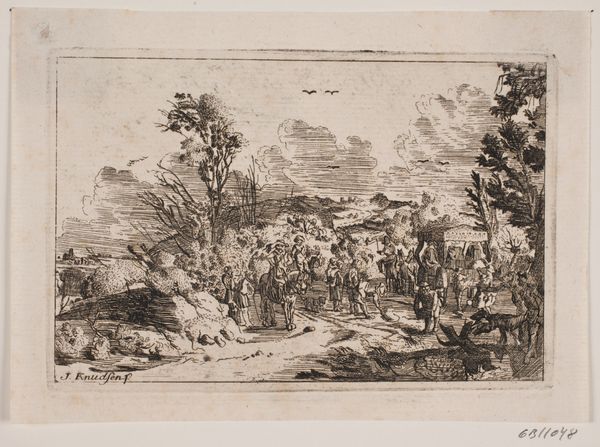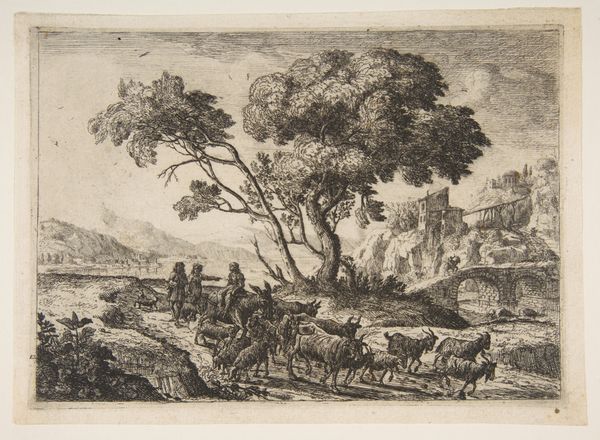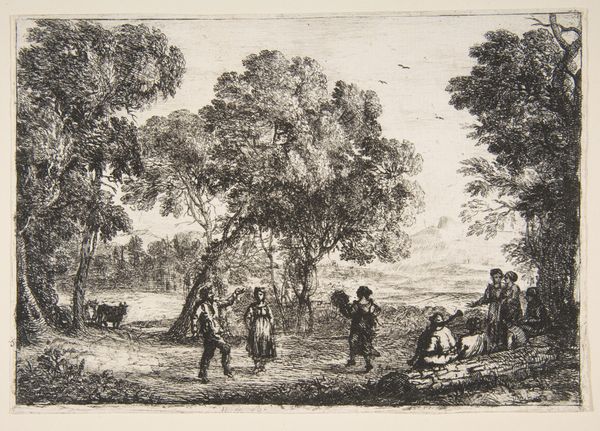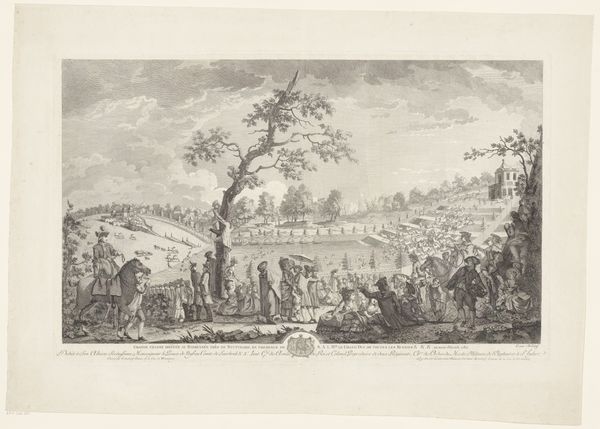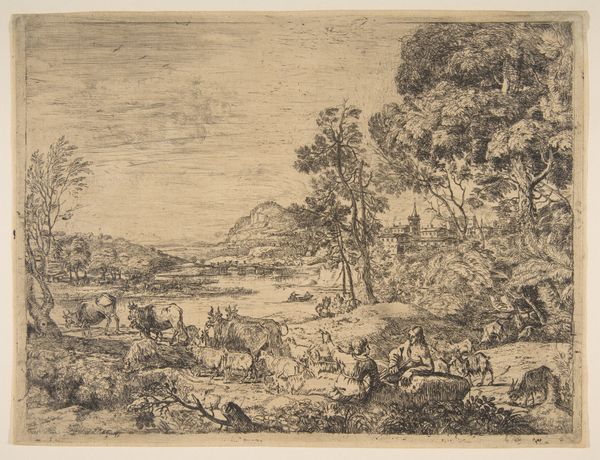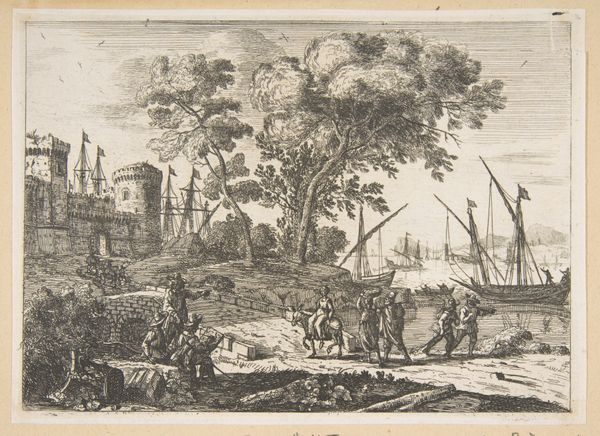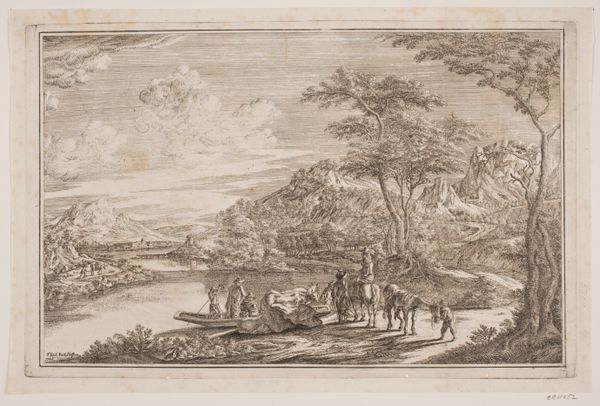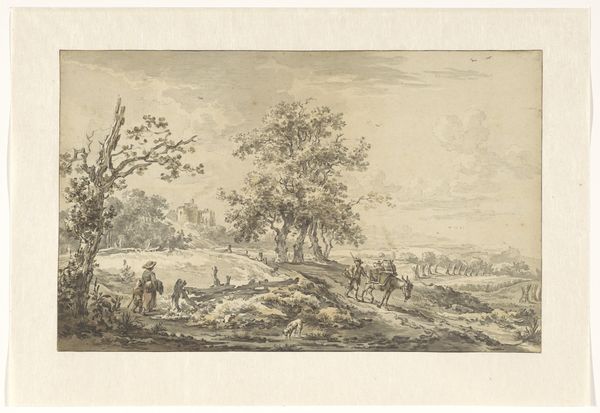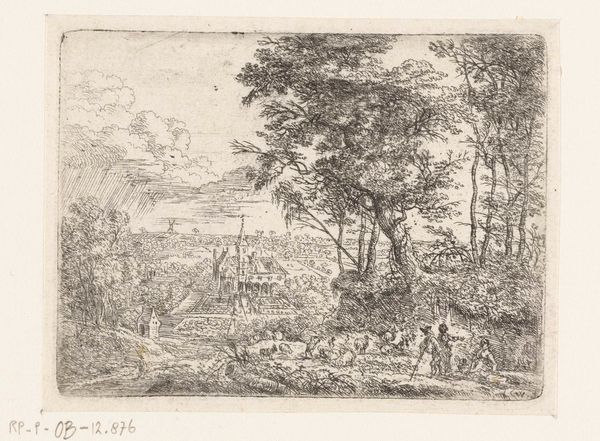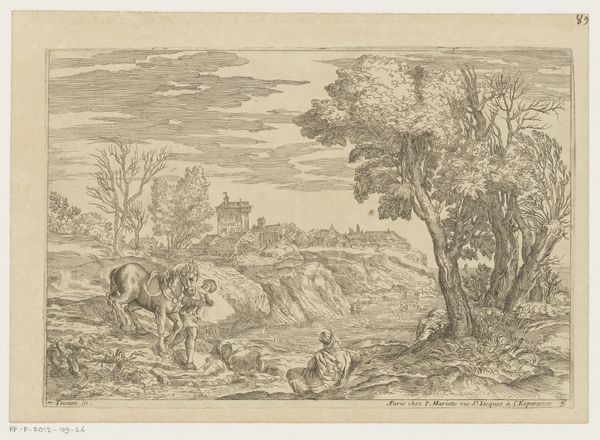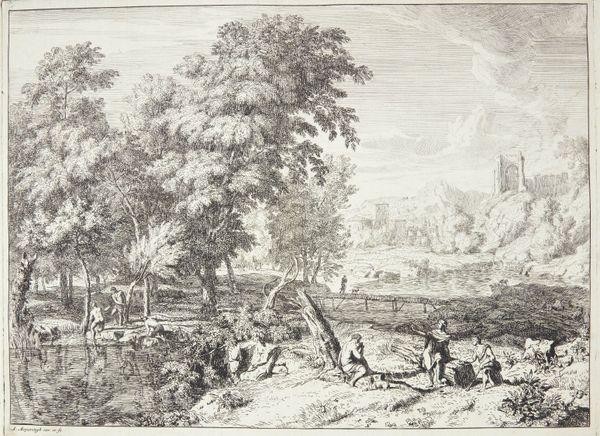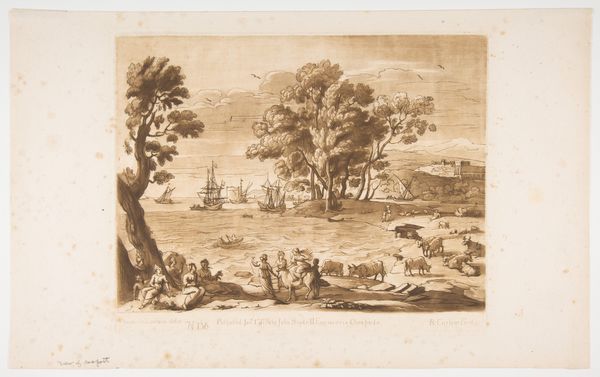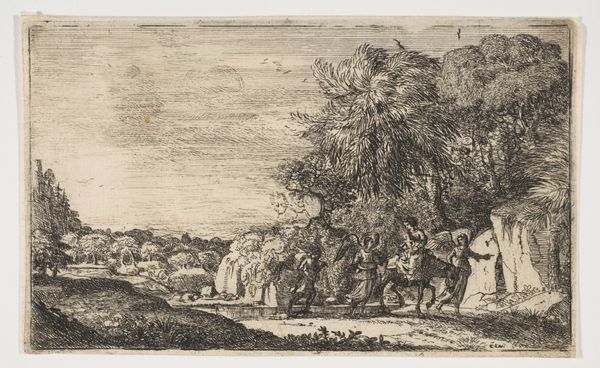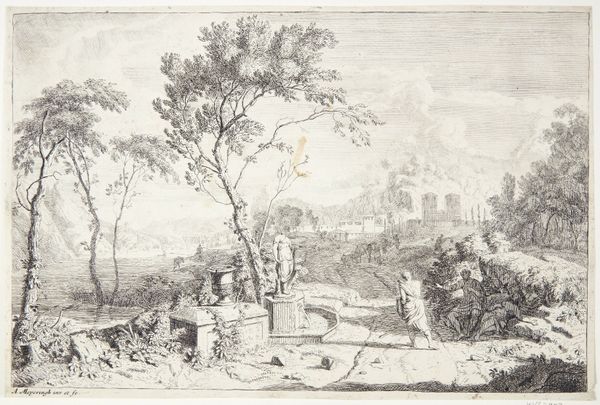
drawing, print, etching
#
tree
#
drawing
#
baroque
#
ship
# print
#
etching
#
landscape
#
figuration
#
men
#
cityscape
#
history-painting
Dimensions: sheet: 8 1/16 x 10 3/16 in. (20.5 x 25.8 cm)
Copyright: Public Domain
Curator: This is Claude Lorrain’s etching, “The Rape of Europa,” created in 1634. What's your initial impression? Editor: Oh, wow, it feels like a stolen glance, a secret whispered on the wind. So delicate and ethereal, almost dreamlike. Despite the dark title, it reads very peacefully to me; what do you see? Curator: It depicts the mythical abduction of Europa by Zeus, disguised as a bull, an allegory rooted in classical history, right? The subject comes across more subtly here, integrated within a more Baroque idealization of landscape than high drama. Editor: Yes! And isn't it interesting how Lorrain focuses on the scenery? It’s like the trees are more important than the *actual* story being depicted! Curator: Right. He presents an idealized pastoral scene where myth seems secondary to this serene and balanced natural environment. We see the women and bull at the shore and large ships waiting. It presents a harmonious blend between classicism and landscape—his signature. Editor: Signature is right! Look at how tiny the figures are against that grandiose backdrop. They're practically swallowed by the landscape. And that light—it’s just gorgeous! It dances across the scene and really heightens the tranquility, at least for me. Curator: Agreed, the luminescence transforms a dark subject into one more poetic than tragic. Also consider the architectural motifs; buildings evoke continuity, linking humanity, divinity, and nature together. The visual weight, though, certainly emphasizes a picturesque landscape first. Editor: The print work almost feels… Impressionistic. Hard to believe it came so much earlier. The trees look as though they were breathing; you can almost hear the wind rustling through their leaves. How clever to weave those ships into the vista, reminding us of what’s to come for poor Europa! Curator: In summary, “The Rape of Europa” weaves together classical narrative, allegorical meaning, and acute awareness of nature’s profound effect on both memory and the unfolding of historical events. It reveals a landscape as more than merely a setting, and instead offers visual commentary on the very notion of time. Editor: Well said. It makes me think of nature as a witness, silent yet all-encompassing, to the dramas that humans play out. Beautifully subtle, and enduring!
Comments
No comments
Be the first to comment and join the conversation on the ultimate creative platform.
